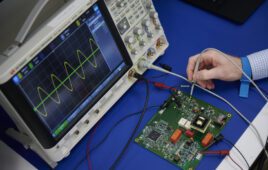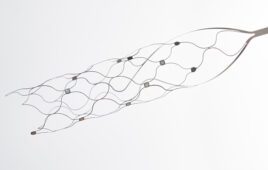The medical device industry is increasingly adopting ideas and technologies from the consumer market. Extended reality (XR) is a key contributor to this evolution.
Jason McGovern, Kaleidoscope Innovation

[Photo by Stella Jacob on Unsplash]
How XR can benefit medical device development
Extended reality can be used throughout the medical device development process, ultimately speeding up the creation and testing of the product.
Further, XR in the medical device development process can also help enable more efficient user feedback during research and testing.
For example, virtual store simulations are an efficient way to gather user feedback in the consumer market. Historically, shelf space layouts were tested through actually building physical shelves. Working in the physical space takes time to move the various products to different places on the shelves between tests, and it also takes users’ time to wait while items are moved. On the other hand, with the virtual store layout, users can walk through a totally different layout within seconds.
This same principle is true in medical device development. For instance, virtual feedback can inform changes to the ergonomics of a device and the surgical suite in a more efficient way before testing in the physical space.
How XR can benefit end-users
Training
When it comes to medical devices, virtual procedural training could help improve overall performance and speed.
Extended reality provides opportunities for students, young physicians, etc. to participate in more practice scenarios than would normally be the case. Certain procedures or opportunities are extremely difficult to set up and execute. With the “magic” of XR, these rare offerings are now available with a click of a button. Practice is crucial to perfecting medical procedures, and XR is one way for clinicians to refine their technique.
Patient experience
Beyond device development and training, XR can be used to benefit the patient’s experience by pulling from the consumer and gaming industry’s focus on XR as an entertainment vehicle.
Hospitals could adopt VR entertainment as a playful distraction for children undergoing a stressful procedure. Virtual reality is already being explored for use in psychiatric care, such as the treatment of phobias, and for an analgesic effect.
Another way to enhance the patient experience is to draw from what Disney is doing in their theme parks. The Happiest Place on Earth is using AR to engage families while they wait in line for rides. Now imagine applying that to a pediatric hospital setting where families are waiting in the lobby.
And there are still more ways that XR could be incorporated into the user’s experience. For instance, physicians could virtually walk the patient through what a procedure would entail using XR visuals, as opposed to simply explaining it with “doctor jargon” and trying to translate that into layman’s terms.
XR watch-outs
While there are numerous reasons to start implementing XR as part of the medical device design process, there are also some watch-outs. These include potential issues of restricted movement and fidelity (although these issues are being worked on as new devices continue to be developed). That’s why product development teams should also have access to wet labs, as medical device development can benefit from the advantages offered in both virtual and real-world environments.
The perfect time
Now is the time for medical device companies to invest in XR – both to help in the development process and to incorporate XR into the end user’s experience. Ten years ago this technology was gimmicky, five years ago it was expensive and inaccessible, and now it is on the cusp of transforming the medical landscape.
Imagine where the technology will be five years from today and how the medical industry could change, adapt and grow with it.
Jason McGovern leads the software development team at Kaleidoscope Innovation (Cincinnati), a full-spectrum product development firm that partners with clients in the medical, consumer and industrial markets. At Kaleidoscope, McGovern manages his team’s production of immersive VR and AR experiences, as well as other interactive products for clients. Prior to joining Kaleidoscope, Jason worked for The Walt Disney Co. in their Disney Interactive division and for Jakks Pacific as a lead producer on their video games and interactive toy products.
The opinions expressed in this blog post are the author’s only and do not necessarily reflect those of Medical Design and Outsourcing or its employees.




